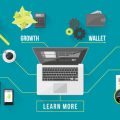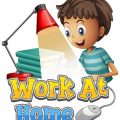Understanding Cold Emailing Etiquette
When reaching out to potential employers or industry contacts in the United States through cold emailing, it’s essential to follow proper etiquette. Doing so shows professionalism, respect, and increases your chances of getting a positive response. Here are the key points to consider:
Professionalism Matters
Your email is often your first impression. Use a professional tone, proper grammar, and a clear subject line. Avoid slang or overly casual language. Double-check for typos and make sure your email address is appropriate (for example, use [email protected] instead of something unprofessional).
Email Structure Example
| Section | What to Include |
|---|---|
| Subject Line | Clear and concise purpose (e.g., “Inquiry about Marketing Analyst Opportunities”) |
| Greeting | Use the recipient’s name if possible (“Dear Ms. Johnson”) |
| Introduction | Briefly introduce yourself and state how you found their contact information |
| Main Message | Explain your reason for reaching out and how it relates to their organization or role |
| Closing | Express appreciation for their time and offer a way to follow up (“Thank you for considering my request. I look forward to hearing from you.”) |
| Signature | Your full name, phone number, LinkedIn profile link (if applicable) |
Show Respect in Your Outreach
Avoid making demands or expecting immediate replies. Always thank the recipient for their time and attention. In American work culture, politeness and respect go a long way, especially when you’re requesting help or advice.
Phrases to Use and Avoid
| Do Use | Don’t Use |
|---|---|
| “I appreciate your time.” | “Get back to me ASAP.” |
| “If you have a moment…” | “You must reply…” |
| “Would you be open to connecting?” | “Contact me immediately.” |
The Importance of Personalization
Avoid sending generic emails. Research the person and company before reaching out. Mention something specific about their background, recent projects, or company achievements. This shows genuine interest and effort, which is highly valued in U.S. networking culture.
Personalization Tips
- Address the recipient by name.
- Mention mutual connections if you have any.
- Reference recent news or achievements relevant to their company.
- Tailor your message to explain why you are interested in them specifically.
By focusing on professionalism, respect, and personalization in your initial outreach, you set yourself apart from other job seekers and build the foundation for meaningful professional connections in the U.S.
2. Crafting a Compelling Subject Line
When it comes to cold emailing for job opportunities in the US, your subject line is your first impression. A great subject line can make the difference between your email being opened or ignored. Here’s how to write subject lines that grab attention and are appropriate for the US job market.
Dos and Donts of Cold Email Subject Lines
| Do | Dont |
|---|---|
| Keep it short and clear (under 50 characters) | Avoid vague phrases like “Hello” or “Opportunity” |
| Mention your purpose (e.g., “Inquiry about [Job Title] Role”) | Don’t use clickbait or misleading statements |
| Personalize with the recipient’s name or company | Don’t use ALL CAPS or excessive punctuation!!! |
| Show value (e.g., “Experienced Marketer Interested in XYZ Corp”) | Avoid sounding desperate or too casual (“Please help!” or “Hey there”) |
Tips for Writing Subject Lines That Get Noticed
- Be Specific: Let the recipient know exactly why you’re reaching out. Instead of “Job Inquiry,” try “Product Designer Seeking Opportunities at ABC Inc.”
- Highlight Connection: If you have a mutual connection or met at an event, mention it briefly: “Referred by John Smith – Marketing Position Interest.”
- Avoid Spam Triggers: Words like “urgent,” “free,” or too many exclamation marks can send your email to spam folders.
- Tailor to the Company: Show you’ve done your homework with a subject like “Inspired by Your Recent Launch – Application for Developer Role.”
- Test Your Line: Before sending, ask yourself if you’d open this email if it landed in your inbox.
Examples of Effective Subject Lines for US Job Seekers
| Effective Subject Line |
|---|
| “Marketing Specialist Interested in Open Roles at [Company]” |
| “Application for Data Analyst – Referred by Jane Doe” |
| “Recent Grad Seeking Entry-Level Position at [Company Name]” |
| “Passionate About Customer Success – Exploring Opportunities” |
| “Met at Tech Conference – Following Up on Product Manager Role” |
Remember:
Your subject line should be respectful, relevant, and clearly state your intent. This approach sets a professional tone and increases the chances of your email being read in the competitive US job market.

3. Effective Email Structure and Content
When cold emailing for jobs in the US, a well-structured message is your best chance to make a strong impression. Here’s how to build an email that gets noticed for all the right reasons.
Start with a Concise Introduction
Your opening should quickly explain who you are and why you’re reaching out. Avoid lengthy backgrounds—get straight to the point.
| Do | Don’t |
|---|---|
| “My name is Alex Chen, and I’m a recent graduate from NYU interested in digital marketing.” | “My name is Alex Chen. I was born and raised in Taiwan, then moved to New York five years ago…” (too much detail) |
State Your Specific Intentions
Let the recipient know exactly why you’re contacting them. Are you seeking career advice, exploring job openings, or requesting an informational interview? Being specific shows respect for their time and aligns with American directness.
| Do | Don’t |
|---|---|
| “I’m reaching out to learn more about entry-level opportunities on your marketing team.” | “I would love to chat sometime if you have a moment.” (too vague) |
Include a Clear Call-to-Action (CTA)
Your email should end with a simple, actionable request. Make it easy for the recipient to respond by suggesting next steps and offering flexibility.
| Do | Don’t |
|---|---|
| “Would you be available for a 15-minute phone call next week?” “Could you let me know if your team is hiring for entry-level roles?” |
“Let me know what you think.” (unclear what action is expected) |
Email Structure at a Glance
| Email Section | Description/Example |
|---|---|
| Subject Line | Clear and relevant: “NYU Grad Interested in Digital Marketing Roles” |
| Introduction | Name, current role/status, brief reason for emailing |
| Main Message | Your specific purpose and value proposition |
| Call-to-Action (CTA) | A simple, polite request for next steps |
| Signature | Name, LinkedIn profile link, contact information |
Tone and Cultural Tips for US Cold Emails
- Be polite but direct—avoid overly formal language.
- Keep your email under 200 words whenever possible.
- Avoid using slang or idioms that may not translate well in business settings.
A clear structure helps your email stand out in busy American inboxes and increases your chances of getting a response. Stick to these guidelines to make every message count!
4. Follow-Up Best Practices
After sending a cold email, knowing how and when to follow up is just as important as the initial message. Following up can demonstrate your enthusiasm and persistence, but if done incorrectly, it may come off as pushy or unprofessional. Here are some essential do’s and don’ts for following up on cold emails in the US job market:
Do’s of Following Up
- Wait the Right Amount of Time: Give the recipient at least 5-7 business days to respond before sending a follow-up. This shows patience and respect for their busy schedule.
- Be Polite and Concise: Keep your follow-up brief and to the point. Express appreciation for their time and gently remind them of your previous message.
- Personalize Your Message: Reference something specific from your initial email or their company to show genuine interest.
- Use a Professional Tone: Always remain courteous, positive, and professional in your language.
Don’ts of Following Up
- Don’t Spam Their Inbox: Avoid sending multiple follow-ups in quick succession. Too many messages can be seen as aggressive.
- Don’t Demand a Response: Never insist that someone replies immediately or use language that pressures them.
- Don’t Apologize Excessively: A simple acknowledgment is enough—over-apologizing can undermine your confidence.
- Don’t Copy-Paste the Same Email: Make sure each follow-up adds value or asks a new question instead of repeating yourself.
Follow-Up Frequency & Timing Table
| Action | Recommended Practice |
|---|---|
| First Follow-Up | 5-7 business days after original email |
| Second Follow-Up (if no reply) | 7-10 business days after first follow-up |
| Total Number of Follow-Ups | No more than 2-3 per contact |
Tone Examples: Good vs. Bad
| Tone Type | Example Phrase |
|---|---|
| Good (Professional) | “Just checking in to see if you had a chance to review my previous email. Thank you for your time!” |
| Bad (Pushy) | “Please reply ASAP—I need an answer right away.” |
By following these best practices, you’ll present yourself as considerate and professional, which increases your chances of getting a positive response from US employers or recruiters.
5. Common Pitfalls to Avoid
When sending cold emails for job opportunities in the US, its easy to make mistakes that can hurt your chances. Here are some typical errors and how you can avoid them:
Typical Mistakes in Cold Emailing
| Mistake | Why It’s a Problem | How to Avoid |
|---|---|---|
| Overly Generic Messages | Recruiters and hiring managers see lots of emails. If your message feels copy-pasted or doesn’t mention anything specific about the company or role, it will likely be ignored. | Personalize each email. Mention something unique about the company or why you’re interested in them specifically. |
| Lack of Research | If you don’t know who you’re emailing or what the company does, it shows a lack of effort and interest. | Take time to learn about the person you’re contacting and the company’s mission. Reference this information in your message. |
| Being Too Persistent | Following up too many times can come across as pushy or desperate, which is frowned upon in American workplace culture. | If you don’t hear back after one or two follow-ups, move on politely. Respect people’s time and boundaries. |
| Asking for Too Much Up Front | Requesting a job interview or referral in your first email can feel aggressive and off-putting. | Start by asking for advice, insights, or a short informational chat instead of a favor right away. |
| Poor Formatting or Typos | Errors in your email suggest carelessness and can make a bad impression in a professional context. | Proofread your messages. Keep formatting clean and easy to read with clear paragraphs and no spelling mistakes. |
Cultural Tips for US Job Seekers
- Be Polite and Direct: Americans appreciate clarity but also value politeness. Use “please” and “thank you,” but get to the point quickly.
- Respect Privacy: Don’t demand personal details or direct contact with higher management without building rapport first.
- Avoid Overly Formal Language: While professionalism is important, US work culture often prefers a friendly, approachable tone over stiff formality.
- Acknowledge Busy Schedules: Show understanding that the recipient may have limited time, such as by writing, “I understand you have a busy schedule.”
Key Takeaway:
The best cold emails are thoughtful, personalized, and respectful of both cultural norms and professional boundaries. By avoiding these common pitfalls, you can make a stronger impression on American employers and increase your chances of success.


